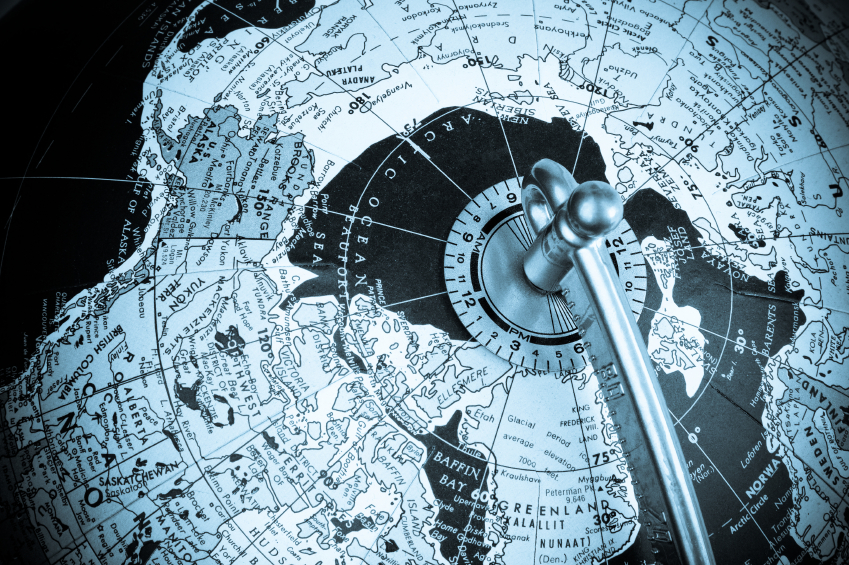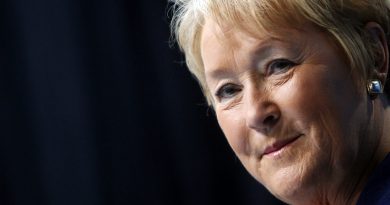Blog: The return of the Arctic Five

Last week, the five Arctic Ocean coastal states signed a much heralded moratorium on fishing in the high seas portion of the central Arctic Ocean, or more specifically, adopted “interim measures to prevent unregulated fishing.”
As the states themselves acknowledge, there is no commercial fishing there now and it is unlikely there will be any in the near future. However, they agreed to apply the precautionary principle, and ensured that if and when Arctic ecosystems evolve to reflect climate changes and commercial fisheries become viable, none will take place until a suitable regional fisheries management organization is in place.
The Arctic fishing ban, as it’s being called, was almost universally celebrated, from the New York Times to the Inuit Circumpolar Council, and even the perpetually disappointed Greenpeace provided faint praise. The Globe & Mail called it “remarkable”, “a rare example of countries co-operating to protect a sensitive environment before it is threatened” and “unusually mature diplomacy” given the overriding tensions between Canada and others with Russia over its intervention into Ukraine.
The ban is significant and the praise is merited. But it could not be in greater contrast to the reception the Arctic Five got the last time they went out in public, in Chelsea, Quebec in 2010. Does the fishing deal mark the return of the Arctic Five?
What is an Arctic Five?
The Arctic Five is a moniker for the group of five states that border the Arctic Ocean, namely Canada, Denmark/Greenland, Norway, Russia and the United States. They negotiated the first Arctic-specific treaty together back in 1973, with the Agreement on the Conservation of Polar Bears, but the Cold War, and a general lack of recognition of the Arctic as a political region in its own right, stymied further cooperation.
As the Cold War thawed, so did Arctic relations, with Mikhail Gorbachev’s 1987 Murmansk speech calling for an Arctic ‘Zone of Peace’ marking the re-establishment of formal international cooperation. In a visit to Leningrad in 1989, then-Canadian Prime Minister Brian Mulroney endorsed the idea, and went one step further, calling for a Council of Arctic countries. Such an idea was not new in Canada, and had been first proposed as early as 1971 by Professor Maxwell Cohen, who thought an Arctic Basin Treaty could foster environmental, scientific and economic cooperation. This was Mulroney’s frame of reference – a council of the five Arctic basin states.
However Finland responded so enthusiastically to Gorbachev’s speech, and together with Canada and Russia put forth the idea of what became the Arctic Environmental Protection Strategy, the Arctic Council’s forebear, in 1991. Indeed all reports and discussion papers on Arctic cooperation I’ve seen from about 1990 on refer to a grouping of the eight Arctic states, with recognition of the role of indigenous peoples as well.
With ocean governance matters arising from UNCLOS a major issue for the Arctic Ocean states in the mid-2000s, and the Arctic Council an unsuitable place to discuss them, it became necessary for the Arctic Five to gather once more. Following the brouhaha of the Summer of 2007, when Russia infamously planted its flag at the sea bed of the North Pole concurrently with Canadian Prime Minister Stephen Harper making significant military investment announcements in the Arctic resulting in a plethora of cover pages and general alarmism, the Norwegian government invited senior legal officials from the five states to Oslo in October of that year, to discuss cooperation in and around the Arctic Ocean. Around the same time, the Danish foreign ministry recommended a Ministerial meeting of those same five states in the Spring of 2008, which the Oslo meeting ended up preparing the groundwork for. This led, of course, to the Ilulissat Declaration, in May 2008, which committed the Arctic Five to the existing legal framework (namely UNCLOS) and the orderly settlement of any possible overlapping claims.
Partners alienated
While this was an important signal to the rest of the world that the Arctic was not some Wild West, the exclusive discussions alienated the other Arctic Council members: Finland, Sweden, and particularly Iceland. Some have speculated that President Grimsson’s founding of the Arctic Circle, an annual, global and inclusive networking event in Reykjavik, was a direct response to the Arctic Five format. The Permanent Participants were similarly non-plussed.
That didn’t stop Canada from inviting the Arctic Five Ministers to Chelsea, Quebec in March 2010 for an “Arctic Oceans Foreign Ministers Meeting”. At the time Arctic politics were top of mind in Canadian, and increasingly global, circles, and the Government was preparing its Arctic Foreign Policy Statement. The meeting was seen as a way for Canada to assume some leadership in the region once again, and the other four states agreed to come. But it ended terribly.
Clinton’s 2010 rebuke
Wikileaks of US diplomatic cables indicate that after Ilulissat, while George W. Bush was still President, Canada expressed the view “that if the other three Arctic Council members had an interest, it was better to invite them. Keeping the group limited to the five littoral states also risks appearing to exclude the indigenous permanent participants of the Arctic Council.” However the United States responded that “the Arctic Five and the Arctic Council had different roles and that the Arctic Five group was a preferable forum in some cases”. The USA “understood the rationale for use of the five as an Arctic Council core group on certain issues, but not for everything.”
But by March 2010 the Administration had changed. Secretary of State Hillary Clinton responded positively to the Canadian invitation to Chelsea, but apparently didn’t believe the event was appropriate. She began the meeting by delivering a prepared statement asserting that “significant international discussions on Arctic issues should include those who have legitimate interests in the region.” She subsequently left the event early, missing the news conference and leaving Canadian Foreign Minister Lawrence Cannon to explain, alone at his podium, the intent of the meeting to media. As the Toronto Star described it, Canada took a kicking.
Along with the displeasure of indigenous groups, the Swedes, the Finns and the Icelanders, Clinton’s rebuke seemed to mark the death knell of the Arctic Five format. Until it came roaring back last week.
The Arctic Five: I Want You Back
I never understood Clinton’s brusque response to the Chelsea meeting, and have maintained she was poorly briefed. The Arctic Five was, and is, a legitimate intergovernmental forum for many issues, mainly those involving management of the Central Arctic Ocean. It’s good to have it back.
Two things stuck me last week: first, was the lack of any opposition or even comment by those parties who had previously expressed disappointment in the Arctic Five format on being excluded from the fishing ban discussions; and second, the total lack of political fanfare regarding the moratorium. We don’t even know who signed it, as there is no photo or even a signature page. It was not a Ministerial event, and perhaps that made all the difference.
I would also like to think that as the Arctic matures as a region, its stakeholders have become confident enough to allow space for multiple forums and platforms in its web of governance. John Kerry is hosting a meeting of the Arctic Eight on climate change in August for example, with expected attendance from President Obama – but outside of the parameters of the Arctic Council, even as it Chairs that forum! and I have heard nary a peep of dissidence. Similarly the Polar Code, probably the Arctic region’s most important legal instrument since UNCLOS, was articulated through the International Maritime Organization – with full support of the Arctic Council and its members. The Arctic region is a much different place politically then it was five years ago, and I am sure it is a good thing.
Related stories from around the North:
Asia: Asia ahead on preparing for polar climate change, says U.S. Arctic rep, Eye on the Arctic
Canada: The Arctic Council – What was accomplished and where we go from here, Eye on the Arctic
China: China’s silk road plans could challenge Northern Sea Route, Blog by Mia Bennett
Finland: US seeks Finnish support for Arctic goals, Yle News
Greenland: Arctic countries ban fishing around North Pole, Alaska Dispatch News
Norway: China eyes Arctic Norway infrastructure projects, Barents Observer
Russia: The Arctic Council’s Immunity to Crimean Flu, Blog by Heather Exner-Pirot
Sweden: Arctic Council – From looking out to looking in, Blog by Mia Bennett, Cryopolitics
United States: Arctic Alaska meeting planned for Kerry, Lavrov and other officials, Alaska Dispatch News



